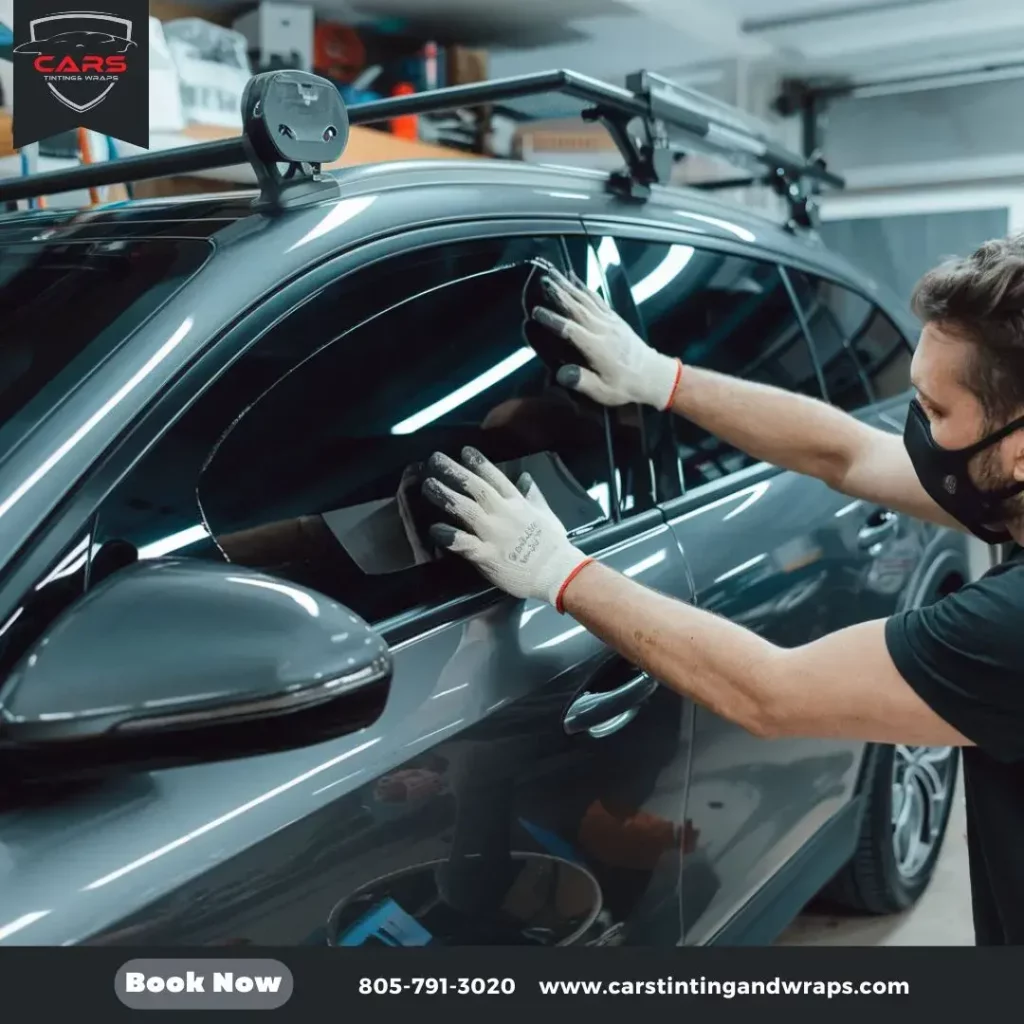
Auto glass tinting is a popular upgrade for vehicle owners, offering benefits such as reducing glare, increasing privacy, and protecting against UV rays. Studies show that high-quality tint can block up to 99% of UV rays and reduce interior temperatures by up to 60%, improving both comfort and vehicle longevity. However, with different types of tinting films available, choosing the right one can be challenging. Each option has its own benefits and drawbacks, with many drivers reporting that ceramic tint significantly reduces cabin temperatures in hot climates, while others prefer carbon tint for its cost-effectiveness and stylish matte finish., making it essential to understand their unique properties before making a decision. This guide breaks down the pros and cons of the most common auto glass tinting films to help you find the best fit for your needs.
Dyed Auto Glass Tinting Film
Pros:
- Affordability: Dyed tint is one of the most cost-effective options available.
- Privacy: Offers a darkened appearance for enhanced privacy.
- Glare Reduction: Reduces glare from the sun and headlights, improving driving comfort.
- Non-Metallic: Does not interfere with GPS, radio, or cell phone signals.
Cons:
- Limited Heat Rejection: Less effective at blocking infrared heat compared to other types.
- Fading Over Time: The dyed film tends to fade with prolonged exposure to sunlight.
- Moderate Durability: More prone to scratches and wear compared to advanced tinting options.
Metalized Auto Glass Tinting Film
Pros:
- Effective Heat Rejection: Blocks a significant amount of heat, keeping the interior cooler.
- Durability: Strong and scratch-resistant, offering long-term protection.
- UV Protection: Reduces UV exposure to prevent interior fading and skin damage.
Cons:
- Signal Interference: The metallic particles may disrupt GPS, radio, and cell phone reception.
- Reflective Appearance: Can have a mirrored look, which may not appeal to all drivers.
- Higher Cost: Generally more expensive than dyed tints.
Carbon Auto Glass Tinting Film
Pros:
- Excellent Heat Rejection: Blocks a higher percentage of infrared heat than dyed tint.
- Fade-Resistant: Does not fade over time like dyed films.
- Non-Metallic: No interference with electronic signals.
- Matte Finish: Offers a sleek, non-reflective appearance.
Cons:
- Higher Price: Costs more than dyed and some metalized tints.
- Professional Installation Required: May need expert application for best results.
Ceramic Window Tint
Pros:
- Superior Heat Rejection: Blocks up to 95% of infrared heat, keeping interiors significantly cooler.
- Maximum UV Protection: Reduces UV exposure by up to 99%, protecting occupants and interiors.
- Clarity: Provides excellent visibility with minimal glare.
- No Signal Interference: Unlike metalized films, ceramic tint does not disrupt electronic devices.
- Highly Durable: Resistant to scratches, fading, and general wear.
Cons:
- Premium Cost: The most expensive option on the market.
- Requires Professional Installation: Complex composition necessitates expert application for optimal performance.
Choosing the Right Tint for Your Vehicle
When selecting an auto glass tinting film, consider the following key factors:
| Feature | Dyed Tint | Metalized Tint | Carbon Tint | Ceramic Tint |
|---|---|---|---|---|
| Cost | Low | Moderate | High | Highest |
| Heat Rejection | Low | High | High | Very High |
| UV Protection | Moderate | High | High | Very High |
| Durability | Moderate | High | Very High | Extremely High |
| Signal Interference | None | Possible | None | None |
| Appearance | Dark Matte | Reflective | Matte | Clear/Non-Reflective |
- Budget: Dyed films are affordable, while ceramic tints offer the highest quality at a premium price.
- Climate: If you live in a hot region, ceramic or carbon tints are the best choices for heat rejection.
- Privacy and Aesthetics: Dyed and carbon tints provide a darker look, while metalized tints offer a reflective finish.
- Electronic Usage: If you rely on GPS, Bluetooth, or radio, avoid metalized tints to prevent signal interference.
Auto glass tinting enhances both the functionality and appearance of your vehicle, but the right choice depends on your needs and budget. Whether you opt for an affordable dyed tint, a heat-resistant ceramic film, or a durable carbon tint, each type has its advantages and trade-offs. Before making a decision, consult with a professional installer. Ask about their experience with different tint types, ensure they use high-quality materials, and check if they provide warranties. Look for reviews or testimonials from previous customers, and verify that they comply with local tinting laws. to ensure compliance with local tinting laws and proper application. Investing in quality tinting can improve driving comfort, vehicle longevity, and overall safety.